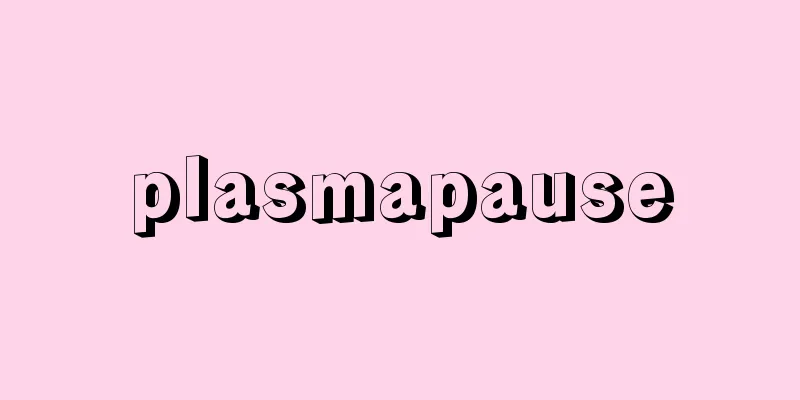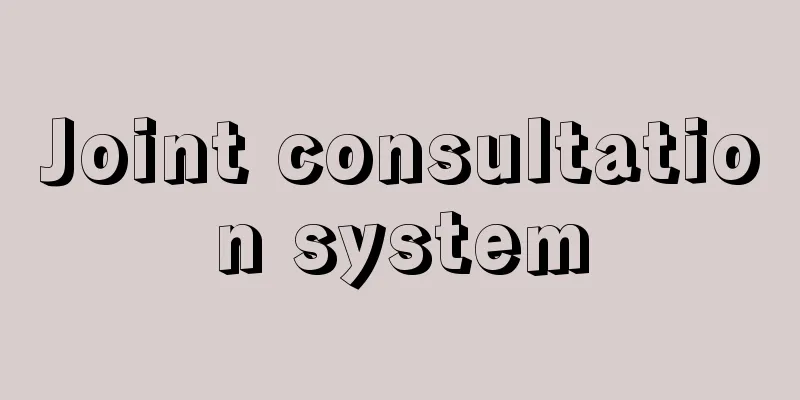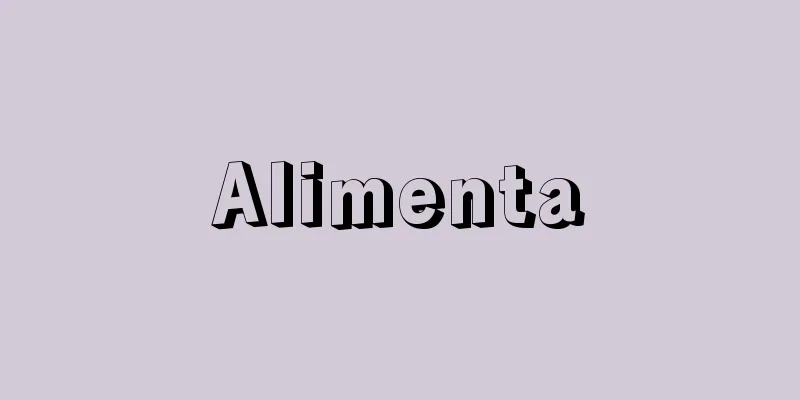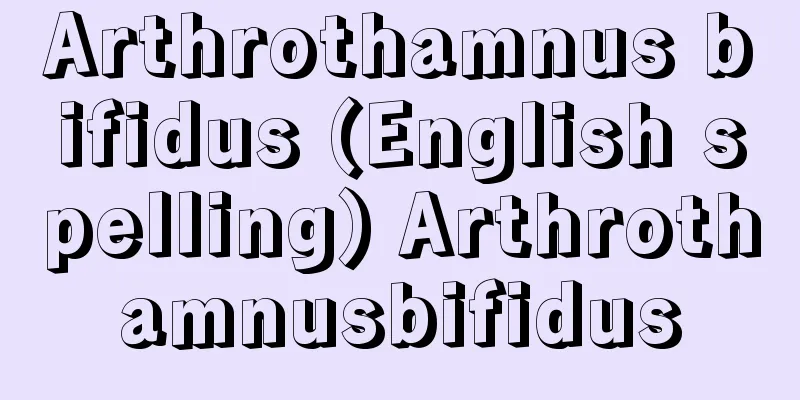Mauritius - Republic of Mauritius (English spelling)

|
Mauritius is an island nation located in the Indian Ocean, 900 km east of Madagascar, in southeastern Africa. It includes Rodrigues Island, 550 km east of Mauritius, and the coral reefs to the north (Agalega Islands, Cargados Carajos Reef, etc.). It has an area of 2,045 square kilometers, a population of 1,253,000 (estimated in 2006), 1,307,000 (estimated in 2011), and a population density of 639 people per square kilometer, making it one of the most densely populated countries in Africa. The capital is Port Louis on the northwest coast of Mauritius. The official name is the Republic of Mauritius. [Ryoji Teratani] NatureMauritius, which accounts for 91% of the country's land area, is an old volcanic island formed by volcanoes that erupted on the Mascarene Ridge, which stretches from the French island of Reunion to the Seychelles. The island is dominated by gently sloping plateaus covered in lava, but there are also some unique mountainous landscapes, such as parts of the caldera walls in the center of the island and isolated rocky peaks. Coral reefs are developed along the coast. The island has a subtropical oceanic climate, influenced by the southeast trade winds, and the eastern coast and central plateau are areas of heavy rainfall. The annual precipitation reaches more than 5,000 mm in the inland areas, where it is at its highest, but decreases to about 750 mm on the west coast, where salt fields are widespread. The temperature is in the low 20s throughout the year. The monthly average temperature is about 27°C in the coastal areas in summer (December to March) and about 22°C in winter (June to September). In the inland areas at higher altitudes, the temperature is 2 to 7°C lower. Even during the summer day, it is cool in the shade, and the temperature drops suddenly at night, so it is not uncomfortably hot. Cyclones can also strike from January to March, causing great damage. In terms of land use, 45% of the country is cultivated land, 28% forest and pasture land, and 24% urban land use. 90% of the cultivated land is sugarcane fields, and only a small amount of natural vegetation remains near the Black River Valley in the southwest. The country is known for the dodo, a large pigeon-like bird that is a symbol of extinct animals, which once lived there, but it became extinct in the late 17th century after the Dutch settled there. [Ryoji Teratani] historyEven during the long period when the island was uninhabited, Arabs, Malays, and Africans are thought to have temporarily arrived on the island. The first record of the "discovery" of Mauritius was by Arabs in the 10th century. The Portuguese landed on the island in 1511, and the Dutch arrived in 1598, naming it Mauritius after the Dutch governor, Maurice. The Dutch later imported slaves from Madagascar and other places, and introduced sugar cane from Batavia, but withdrew in 1710. In 1715, the French began full-scale colonization, and Labroudonnais, who became governor in 1735, built the colonial capital of Port Louis, improved the port of Port Louis, and implemented many development, industrial, and security policies, laying the foundations of the nation. However, in 1810 during the Napoleonic Wars, the British occupied the island, and British sovereignty was confirmed in the Treaty of Paris in 1814. After the abolition of slavery in 1833, Britain introduced Indian indentured labourers to replace Africans. By 1860, Indians had reached 200,000, more than two-thirds of the total population. After World War II, self-government was granted and the independence movement gained momentum, but it was difficult due to conflicts between Indians and Creoles (a mix of French and black people). However, at the Constitutional Convention held in London in 1965, complete internal autonomy was transferred to the country, and in March 1968, it officially achieved independence as a self-governing country within the British Commonwealth of Nations. [Ryoji Teratani] PoliticsAfter independence, the first Prime Minister was S. Seewoosagur Ramgoolam (1900-1985), a chief bureaucrat in the colonial government. The Mauritian Labour Party (MLP), led by Ramgoolam and based among the Indian residents, maintained power alone or in coalition, but in the general election of 1982, a left-wing coalition government led by Anaerood Jugnauth (1930-2021) was formed by the Creole Mauritian Militant Movement (MMM) and the Mauritian Socialist Party (PSM). However, due to internal conflicts within the MMM and defections from the PSM, the government collapsed in 1983, and Prime Minister Jugnauth left the MMM to form the Militant Socialist Movement (MSM), which won the general election that same year. However, criticism of Jugnauth's long-term administration grew, and in the general election of December 1995, the ruling MSM lost all of its seats, and a coalition government with the MLP and MMM was formed, with N. Ramgoolam (1947-), leader of the MLP and son of the country's first prime minister, becoming prime minister. In July 1997, the coalition government collapsed, and the MLP became the sole government. In the general election of September 2000, the MSM and MMM formed an alliance and won a majority, and Jugnauth became prime minister again. In the general election of July 2005, the MLP-led coalition, the Alliance Sociale (AS), won, and Ramgoolam returned to the position of prime minister, and was re-elected in the general election of May 2010. In 1992, Mauritius transitioned from a constitutional monarchy to a republic with a president as head of state, but real political power rests with the prime minister. The president is elected by the National Assembly for a five-year term. The National Assembly is unicameral with 70 seats (of which eight are representatives of ethnic minorities), and members serve five-year terms. Mauritius' diplomacy is based on a non-aligned approach, but as a bridge between Asia and Africa, it has been notable for its closer ties with India, Middle Eastern countries, Southeast Asian countries, and more recently China. Diego Garcia Island, located 1,900 km northeast of Mauritius, is a part of the Chagos Archipelago. In 1965, just before independence, the islanders were forcibly relocated and turned into a military base. It was then handed over to the UK, and leased to the United States on a 50-year contract. As a result, the UK has requested the return of the territory, and the territorial issue is still in dispute. [Ryoji Teratani] Economy and IndustryLooking at the country's economic growth since independence, it has achieved steady and high economic development, which can be said to be unusual for an African country. The average annual GDP growth rate has been high, at over 4% every year except for 1975 and 1980. Economic growth has been supported by a steady increase in exports. Sugar was once the only traded item, but since the late 1970s the share of manufactured products from export processing zones has rapidly increased, reaching approximately 80% as of 2011. The main export destinations are the UK and France, while the main import destinations are India, China, South Africa, France, etc. As of 2011, the key industries are sugar, export processing zone manufacturing, and tourism. Sugarcane agriculture, once the country's leading industry, occupies about 90% of the arable land, but competition with other sugar producing countries has been fierce, and Mauritius' industrial and economic position has declined significantly. The number of sugar factories has also fluctuated from about 20 since 1960, but as of 2011, rationalization since 2000 has consolidated it to six factories. The export processing zone was first established in 1971, and since then, industrial parks have been established throughout the island. The number of companies located in the zone has been declining in the late 1980s, the number of employees in the early 1990s, and the amount of exports since 2001, and the overall sluggish growth of the export processing zone has become evident. The reason for this is that it has become biased toward less advanced industries such as textile and garment companies. In recent years, a business park has been established in the Ebene district in the center of the island, and IT companies, including those with Indian capital, are gathering there. There are also signs of major Mauritian companies relocating their headquarters from Port Louis to the area. Mauritius is known as a "Paradise of the Indian Ocean" and is also known as a high-end marine resort. The number of foreign tourists (mostly French) and tourism revenues are rapidly increasing, but there are concerns about the deterioration of the natural environment, such as the negative impact on coral reefs caused by the dumping of sand for beach conservation and the construction of golf courses on uninhabited islands. The currency is the Mauritian Rupee. [Ryoji Teratani] Society and CultureThe population is extremely diverse, reflecting its complex colonial history, with 68% Indian, 27% Creole, Chinese and European. Religion is also diverse, with 50% Hindu, 32% Christian, 17% Muslim and 0.7% Buddhist. The official language is English, but French and Creole (a compound language of French, Bantu and Malagasy) are also widely spoken, and Hindi is spoken among the Indian residents. Education is free from primary and secondary schools to the University of Mauritius, and the standard of education is high. It is notable that most of the population is fluent in both English and French. Daily newspapers include Le Mauritius. There is state-run television and radio broadcasting, and French is the predominant language used. [Ryoji Teratani] Relations with JapanDiplomatic relations with Japan were established in 1968 (Showa 43). There is no Japanese embassy in Madagascar, and the Japanese Embassy in Madagascar is responsible for all operations. Madagascar mainly exports frozen fish (such as alfonsino), clothing, and cut flowers (such as anthuriums) to Japan, and imports cars. There are 17 Japanese residents (2010). [Ryoji Teratani] "Mauritius: An Island Region in the Indian Ocean" by Ryoji Teratani (included in "Asakura World Geography Lecture 12: Africa II," edited by Kazunobu Ikeya, Susumu Takeuchi, and Renya Sato, 2008, Asakura Publishing) [References] | | | | | [Additional information] |"> Mauritius flag ©Shogakukan Illustration/Shogakukan Creative "> Mauritius location map Source: Shogakukan Encyclopedia Nipponica About Encyclopedia Nipponica Information | Legend |
|
アフリカ南東部、マダガスカル島東方900キロメートルのインド洋上に浮かぶモーリシャス島を中心とする島嶼(とうしょ)国。モーリシャス島東方550キロメートルのロドリゲス島および北方のサンゴ礁群(アガレガ諸島、カルガドス・カラホス礁など)を含む。面積2045平方キロメートル、人口125万3000(2006年推計)、130万7000(2011年推計)、人口密度は1平方キロメートル当り639人であり、アフリカでもっとも人口の稠密(ちゅうみつ)な国の一つである。首都はモーリシャス島北西岸のポート・ルイス。正式名称はモーリシャス共和国Republic of Mauritius。 [寺谷亮司] 自然国土の91%を占めるモーリシャス島は、フランス領レユニオン島からセイシェル諸島に連なるマスカリーン海嶺上に噴き出した火山よりなる古い火山島である。全体に溶岩に覆われた緩やかな高原地形が卓越するが、島の中央部のカルデラ壁の一部や孤立峰の岩山などの特異な山地景観もみられる。沿岸にはサンゴ礁が発達する。気候は亜熱帯性海洋性であり、南東貿易風に影響され、東岸や中央高原地域が多雨地域となる。年降水量は、最多の内陸部では5000ミリメートル以上に達するが、西岸では約750ミリメートルに減じ、塩田景観が広がる。気温は、年間を通じ20℃台前半が卓越する。月平均気温は、海岸部では夏季(12~3月)は約27℃、冬季(6~9月)は約22℃である。標高の高い内陸部ではさらに気温が2~7℃低い。夏季の日中でも、日陰に入れば涼しく、夜間は急に気温が低下するので不快なほど暑くはない。また、1~3月にはサイクロンが来襲して大きな被害をもたらすことがある。国土の土地利用状況をみると、農耕地45%、森林・放牧地28%、都市的土地利用24%などである。農耕地の90%はサトウキビ畑であり、自然植生は南西部のブラック・リバー渓谷付近にわずかに残存するのみである。絶滅動物のシンボルとされるハト目の大鳥ドードーがかつて存在していたことで知られるが、オランダ人入植後の17世紀後半に同鳥は絶滅した。 [寺谷亮司] 歴史長い無人島時代にも、アラブ人、マレー人、アフリカ人の一時的渡来はあったと思われる。モーリシャス島「発見」の最初の記録は、10世紀のアラブ人によるものである。1511年にポルトガル人が上陸し、1598年にはオランダ人が来島して、オランダ総督のマウリッツにちなんでモーリシャス島と命名した。オランダ人はその後、マダガスカルなどから奴隷を移入し、バタビアからサトウキビを導入したが、1710年に撤退した。1715年にフランス人が本格的な植民を開始し、1735年に総督に就任したラブルードネは植民地政府首都ポート・ルイスの建設、ポート・ルイス港の整備をはじめ、多くの開発・産業・治安政策を実施し、国家的基礎を築いた。しかし、ナポレオン戦争中の1810年にイギリスが島を占領し、1814年のパリ条約でイギリスの領有権が確定した。イギリスは、1833年の奴隷制度廃止法による奴隷解放ののち、アフリカ人にかえてインド人年期契約労働者を導入した。1860年ごろには、インド人は全人口の3分の2を超える20万人に達した。第二次世界大戦後の1947年に自治が認められ独立運動が高まったが、インド人とクレオール(フランス人と黒人との混血)との対立から難航した。しかし、1965年のロンドンでの憲法制定会議で完全な内政自治権が委譲され、1968年3月イギリス連邦内の自治国として正式に独立を達成した。 [寺谷亮司] 政治独立後の初代首相には、植民地政府の主席官僚であったS・ラムグーラムSeewoosagur Ramgoolam(1900―1985)が就任した。インド系住民を基盤としてラムグーラムが率いるモーリシャス労働党(MLP:Mauritian Labour Party)は、単独あるいは連立して政権を維持したが、1982年の総選挙ではクレオール系のモーリシャス闘争運動(MMM:Mauritian Militant Movement)とモーリシャス社会党(PSM:Mauritian Socialist Party)によるジュグノートAnerood Jugnauth(1930―2021)左派連合政権が誕生した。しかし、MMMの内紛、PSMの離反などにより、1983年同政権は崩壊し、首相のジュグノートはMMMを脱退しモーリシャス社会主義運動(MSM:Militant Socialist Movement)を結成して、同年の総選挙で勝利した。しかし長期間のジュグノート政権に批判が高まり、1995年12月の総選挙で与党MSMは議席を完全に失い、MLPとMMMとの連立内閣が成立し、MLP党主で初代首相の息子のN・ラムグーラムNavinchandra Ramgoolam(1947― )が首相となった。1997年7月に連立内閣は崩壊し、MLPによる単独内閣となった。2000年9月の総選挙ではMSMとMMMが連合を組んで過半数を獲得し、ジュグノートがふたたび首相になった。2005年7月の総選挙では、MLP主導の政党連合である社会同盟(AS:the Alliance Sociale)が勝利し、ラムグーラムが首相に返り咲き、2010年5月の総選挙でも再任された。 モーリシャスは、1992年に立憲君主制から大統領を元首とする共和制に移行したが、政治の実権は首相にある。大統領は国民議会で選出され、任期は5年である。国民議会は一院制で議席数は70(うち8議席は少数民族代表)、議員任期は5年である。外交は非同盟を基調とするが、アジアとアフリカの掛け橋として、とくにインド、中東諸国、東南アジア諸国、最近では中国との関係の緊密化が目だつ。 なお、モーリシャス島北東1900キロメートルのチャゴス群島内のディエゴ・ガルシア島は、独立直前の1965年に島民の強制移住により軍事基地化されてイギリスに割譲させられ、アメリカ合衆国へ50年契約で貸与されている。このため、イギリス政府に対して領土の返還要求を行っており、領土問題が係争中である。 [寺谷亮司] 経済・産業独立以後の経済成長をみると、アフリカ諸国としては異例ともいえる着実かつ高率の経済発展を遂げてきた。年平均GDP成長率は、1975年と1980年を除けば毎年ほぼ年率4%以上の高率を示す。経済成長を支えてきたのは輸出の堅調な増加である。かつては砂糖が唯一の貿易品であったが、1970年代後半以降は輸出加工区製造業製品のシェアが急増し、2011年時点では約8割に達する。おもな輸出相手国はイギリス、フランス、おもな輸入相手国はインド、中国、南アフリカ共和国、フランスなどである。 2011年時点での基幹産業は砂糖産業、輸出加工区製造業、観光産業である。かつての卓越産業であったサトウキビ農業は、農耕地の約9割を占めるが、他の砂糖生産国との競争状況は厳しく、その産業経済的地位は大幅に低下した。製糖工場数も、1960年以降約20工場で推移してきたが2000年以降の合理化によって2011年時点では6工場に集約された。輸出加工区は1971年に初めて設立され、以後モーリシャス全島各地に工業団地の立地が図られた。立地企業数は1980年代後半、雇用者数は1990年代前半、輸出額は2001年以降に減少傾向がみられ、輸出加工区全体の伸び悩みが顕著となってきた。この理由としては、繊維・縫製企業など高度化していない業種に偏ってきたことを指摘できる。近年、島中央部のエベネ地区にビジネスパークが設立され、インド資本などのIT企業が集積しつつある。同地区へは、モーリシャス有力企業が、ポート・ルイスから本社を移転する動きもみられる。 モーリシャスは「インド洋の楽園」とよばれるなど、高級海洋リゾートとしても知られている。外国人観光客数(フランス人が最多)や観光収入は急増しているが、ビーチ保全のための砂の投入によるサンゴへの悪影響、無人島へのゴルフ場建設など自然環境の悪化が危惧(きぐ)される。通貨はモーリシャス・ルピー。 [寺谷亮司] 社会・文化住民は複雑な植民史を反映してきわめて多様であり、インド人68%、クレオール27%のほかに中国人およびヨーロッパ人がいる。宗教もヒンドゥー教50%、キリスト教32%、イスラム教17%、仏教0.7%と多彩である。公用語は英語であるが、フランス語、クレオール語(フランス語およびバントゥー語、マダガスカル語などとの合成語)が普及しており、インド系住民の間ではヒンディー語が使われている。 小・中学校からモーリシャス大学まで教育費は無償であり、教育水準は高い。国民のほとんどが英語とフランス語に堪能であることは特筆される。日刊紙には『ル・モーリシアン』などがある。国営のテレビ・ラジオ放送があり、使用言語はフランス語が多い。 [寺谷亮司] 日本との関係日本とは1968年(昭和43)に外交関係を樹立した。日本国大使館はなく、在マダガスカル日本大使館が業務を兼轄している。日本へはおもに冷凍魚類(キンメダイなど)、衣類、切り花(アンセリウムなど)を輸出し、自動車を輸入している。在留邦人数は17人(2010)。 [寺谷亮司] 『寺谷亮司著「モーリシャス―インド洋上の島嶼地域―」(池谷和信・武内進・佐藤廉也編『朝倉世界地理講座12 アフリカⅡ』所収・2008・朝倉書店)』 [参照項目] | | | | | [補完資料] |"> モーリシャスの国旗 ©Shogakukan 作図/小学館クリエイティブ"> モーリシャス位置図 出典 小学館 日本大百科全書(ニッポニカ)日本大百科全書(ニッポニカ)について 情報 | 凡例 |
>>: Morisada's Mankou (Morissa's Manga Mankou)
Recommend
Spirran
[synonym] spiro compound Source: Morikita Publish...
E. Johnson's British Gazette and Sunday Monitor
…Initially, newspapers were closed on the Christi...
Hotteterre
…In the mid-17th century, the inside diameter of ...
Salt Owl - Enkyo
...A group of Chinese salt smugglers. They are al...
Brussels - Bruxelles
The capital of Belgium. Located in the center of ...
Inorganic chemical industry
Chemical industry, whose raw materials and product...
Haikai Mondo
A treatise on haiku. Starting with the letter sent...
"Illustrated Guide to Strange Shells"
...Beginning with Fukane Sukehito's "Hon...
Ādi-buddha (English spelling) Adibuddha
...Buddha as the origin of the universe. It is us...
Aichi Liberal Party
...One of the incidents that intensified the Free...
link bar
...This is called Kappe. Kappe means hat in Germa...
Assassin Bug - Osashigame
…He is said to be the founder of modern insect ph...
Hanging - Kakezukuri
A structure that juts out from a mountain cliff o...
Insulin
Reference value 8-11μU/ml Check for diabetes etc....
Chalcophaps indica (English spelling) Chalcophapsindica
...The subfamily Columba consists of only three s...









